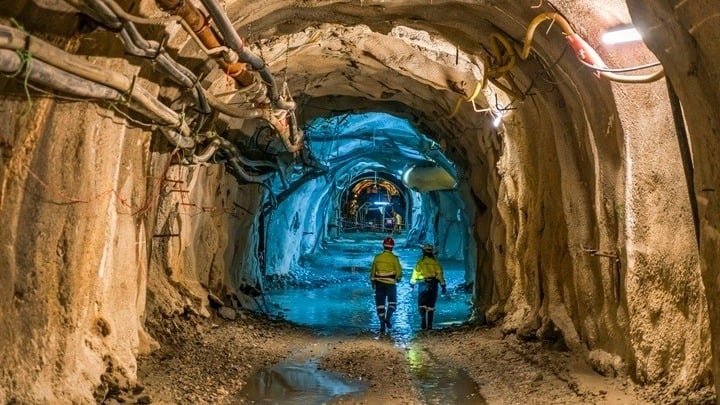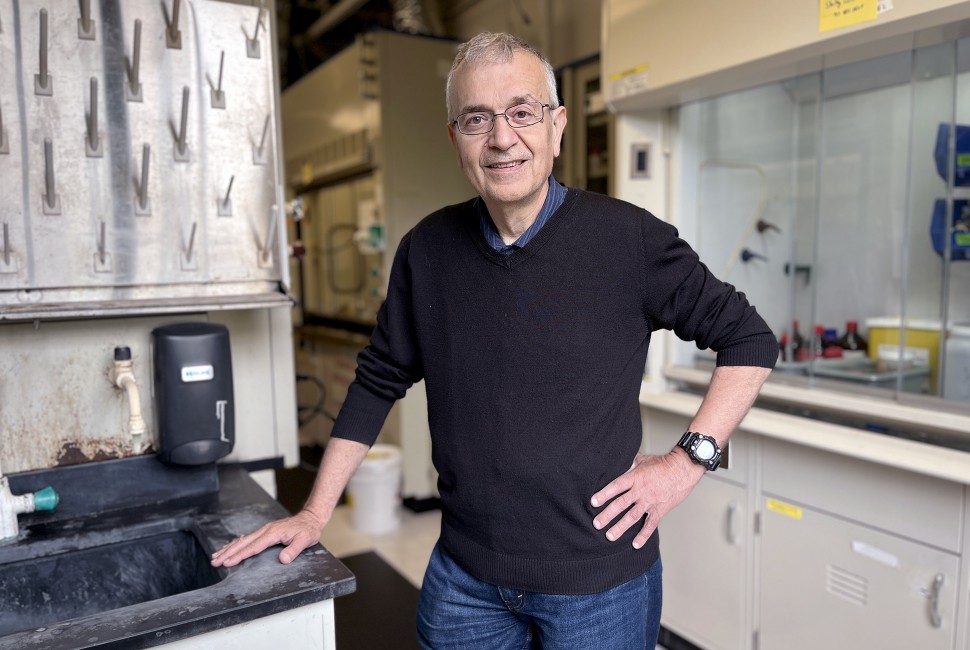
A new mineral discovered recently in an abandoned gold mine in Hungary has been named kanatzidisite in honor of Greek scientist Mercouri Kanatzidis, an inorganic chemist at Northwestern University, Chicago.
The mineral, a chalcogenide, was found in 2023 in the Nagybörzsöny deposit at Alsó-Rózsa, Hungary, and now is in the collection of the Museo di Storia Naturale, Università di Firenze, Florence, Italy.
The International Mineralogical Society (IMA) announced recently that the mineral is named after Kanatzidis in recognition of his significant contributions to chalcogenide chemistry.
“I am deeply honored to have a new mineral named after me, kanatzidisite, symbolizing the remarkable diversity and wonders of the Earth’s geological treasures,” Kanatzidis told the newsletter of Northwestern University.
“Currently, kanatzidisite is rare, but I hope that larger deposits will be found as geologists gain a better understanding of where to look,” he said.

New mineral named after Greek scientist and its applications
Chalcogenides are compounds containing at least one chalcogen elemental ion and at least one metallic element. They are compounds formed principally from chalcogen element atoms, for example, sulfur, selenium, or tellurium, and they are altogether different from silica glass. Chalcogenides come in a variety of colors from partially transparent to completely opaque, depending on their chemical components.
Kanatzidis’ research has generated seminal work in synthetic metal chalcogenide chemistry and the development of new functional chalcogenide materials.
Applications of these materials include solar cells, X-ray and gamma ray detector materials, topological quantum materials, and highly efficient thermoelectric materials.
Kanatzidis, who graduated from the Aristotle University of Thessaloniki, is now the Charles E. and Emma H. Morrison Professor of Chemistry in the Weinberg College of Arts and Sciences.
“I hope that kanatzidisite serves as an inspiration for future generations of scientists and explorers, encouraging them to delve deeper into the mysteries of nature and uncover and create even more extraordinary minerals. Who knew my love for minerals would lead to this? I guess I can now proudly claim that I have a ‘rock-solid’ legacy in the field of geology!” the Greek scientist said.
Kanatzidis’ research encompasses a wide range of areas, including exploratory synthesis in chalcogenides and multianionic materials, thermoelectric applications, hard radiation detectors, and the discovery of hybrid perovskite materials for solar cells. We invite you to explore our website and delve into our exciting research endeavors.
“Our objective is to advance and broaden the ‘exploratory synthesis’ and ‘synthesis science loop’ to bolster materials design, discovery, and synthetic methodology,” he says.
Kanatzidis was given the 2023 Centerary Prize for pioneering contributions to the synthesis and development of novel semiconducting halide perovskites for application in solar energy conversion.
He was recently elected a member of the American Academy of Arts and Sciences.
